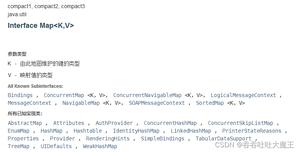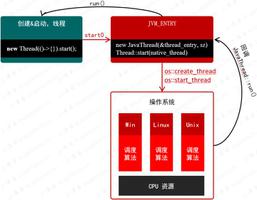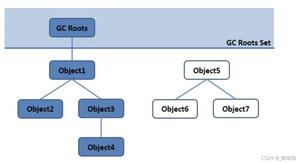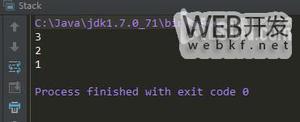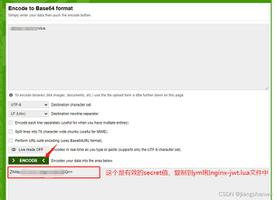栈和队列的面试题Java实现【重要】

栈和队列:
面试的时候,栈和队列经常会成对出现来考察。本文包含栈和队列的如下考试内容:
(1)栈的创建
(2)队列的创建
(3)两个栈实现一个队列
(4)两个队列实现一个栈
(5)设计含最小函数min()的栈,要求min、push、pop、的时间复杂度都是O(1)
(6)判断栈的push和pop序列是否一致
1、栈的创建:
我们接下来通过链表的形式来创建栈,方便扩充。
代码实现:
1 public class Stack { 2
3 public Node head;
4 public Node current;
5
6
7 //方法:入栈操作
8 public void push(int data) {
9 if (head == null) {
10 head = new Node(data);
11 current = head;
12 } else {
13 Node node = new Node(data);
14 node.pre = current;//current结点将作为当前结点的前驱结点
15 current = node; //让current结点永远指向新添加的那个结点
16 }
17 }
18
19 public Node pop() {
20 if (current == null) {
21 return null;
22 }
23
24 Node node = current; // current结点是我们要出栈的结点
25 current = current.pre; //每出栈一个结点后,current后退一位
26 return node;
27
28 }
29
30
31 class Node {
32 int data;
33 Node pre; //我们需要知道当前结点的前一个结点
34
35 public Node(int data) {
36 this.data = data;
37 }
38 }
39
40
41 public static void main(String[] args) {
42
43 Stack stack = new Stack();
44 stack.push(1);
45 stack.push(2);
46 stack.push(3);
47
48 System.out.println(stack.pop().data);
49 System.out.println(stack.pop().data);
50 System.out.println(stack.pop().data);
51 }
52
53 }
入栈操作时,14、15行代码是关键。
运行效果:
2、队列的创建:
队列的创建有两种形式:基于数组结构实现(顺序队列)、基于链表结构实现(链式队列)。
我们接下来通过链表的形式来创建队列,这样的话,队列在扩充时会比较方便。队列在出队时,从头结点head开始。
代码实现:
入栈时,和在普通的链表中添加结点的操作是一样的;出队时,出的永远都是head结点。
1 public class Queue { 2 public Node head;
3 public Node curent;
4
5 //方法:链表中添加结点
6 public void add(int data) {
7 if (head == null) {
8 head = new Node(data);
9 curent = head;
10 } else {
11 curent.next = new Node(data);
12 curent = curent.next;
13 }
14 }
15
16 //方法:出队操作
17 public int pop() throws Exception {
18 if (head == null) {
19 throw new Exception("队列为空");
20 }
21
22 Node node = head; //node结点就是我们要出队的结点
23 head = head.next; //出队之后,head指针向下移
24
25 return node.data;
26
27 }
28
29
30 class Node {
31 int data;
32 Node next;
33
34 public Node(int data) {
35 this.data = data;
36 }
37 }
38
39
40 public static void main(String[] args) throws Exception {
41 Queue queue = new Queue();
42 //入队操作
43 for (int i = 0; i < 5; i++) {
44 queue.add(i);
45 }
46
47 //出队操作
48 System.out.println(queue.pop());
49 System.out.println(queue.pop());
50 System.out.println(queue.pop());
51
52 }
53 }
运行效果:
3、两个栈实现一个队列:
思路:
栈1用于存储元素,栈2用于弹出元素,负负得正。
说的通俗一点,现在把数据1、2、3分别入栈一,然后从栈一中出来(3、2、1),放到栈二中,那么,从栈二中出来的数据(1、2、3)就符合队列的规律了,即负负得正。
完整版代码实现:
1 import java.util.Stack;2
3 /**
4 * Created by smyhvae on 2015/9/9.
5 */
6 public class Queue {
7
8 private Stack<Integer> stack1 = new Stack<>();//执行入队操作的栈
9 private Stack<Integer> stack2 = new Stack<>();//执行出队操作的栈
10
11
12 //方法:给队列增加一个入队的操作
13 public void push(int data) {
14 stack1.push(data);
15
16 }
17
18 //方法:给队列正价一个出队的操作
19 public int pop() throws Exception {
20
21
22 if (stack2.empty()) {//stack1中的数据放到stack2之前,先要保证stack2里面是空的(要么一开始就是空的,要么是stack2中的数据出完了),不然出队的顺序会乱的,这一点很容易忘
23
24 while (!stack1.empty()) {
25 stack2.push(stack1.pop());//把stack1中的数据出栈,放到stack2中【核心代码】
26 }
27
28 }
29
30 if (stack2.empty()) { //stack2为空时,有两种可能:1、一开始,两个栈的数据都是空的;2、stack2中的数据出完了
31 throw new Exception("队列为空");
32 }
33
34 return stack2.pop();
35 }
36
37 public static void main(String[] args) throws Exception {
38 Queue queue = new Queue();
39 queue.push(1);
40 queue.push(2);
41 queue.push(3);
42
43 System.out.println(queue.pop());
44
45 queue.push(4);
46
47 System.out.println(queue.pop());
48 System.out.println(queue.pop());
49 System.out.println(queue.pop());
50
51 }
52
53 }
注意第22行和第30行代码的顺序,以及注释,需要仔细理解其含义。
运行效果:
4、两个队列实现一个栈:
思路:
将1、2、3依次入队列一, 然后最上面的3留在队列一,将下面的2、3入队列二,将3出队列一,此时队列一空了,然后把队列二中的所有数据入队列一;将最上面的2留在队列一,将下面的3入队列二。。。依次循环。
代码实现:
1 import java.util.ArrayDeque;2 import java.util.Queue;
3
4 /**
5 * Created by smyhvae on 2015/9/9.
6 */
7 public class Stack {
8
9 Queue<Integer> queue1 = new ArrayDeque<Integer>();
10 Queue<Integer> queue2 = new ArrayDeque<Integer>();
11
12 //方法:入栈操作
13 public void push(int data) {
14 queue1.add(data);
15 }
16
17 //方法:出栈操作
18 public int pop() throws Exception {
19 int data;
20 if (queue1.size() == 0) {
21 throw new Exception("栈为空");
22 }
23
24 while (queue1.size() != 0) {
25 if (queue1.size() == 1) {
26 data = queue1.poll();
27 while (queue2.size() != 0) { //把queue2中的全部数据放到队列一中
28 queue1.add(queue2.poll());
29 return data;
30 }
31 }
32 queue2.add(queue1.poll());
33 }
34 throw new Exception("栈为空");//不知道这一行的代码是什么意思
35 }
36
37 public static void main(String[] args) throws Exception {
38 Stack stack = new Stack();
39
40 stack.push(1);
41 stack.push(2);
42 stack.push(3);
43
44 System.out.println(stack.pop());
45 System.out.println(stack.pop());
46 stack.push(4);
47 }
48 }
运行效果:
5、设计含最小函数min()的栈,要求min、push、pop、的时间复杂度都是O(1)。min方法的作用是:就能返回是栈中的最小值。【微信面试题】
普通思路:
一般情况下,我们可能会这么想:利用min变量,每次添加元素时,都和min元素作比较,这样的话,就能保证min存放的是最小值。但是这样的话,会存在一个问题:如果最小的元素出栈了,那怎么知道剩下的元素中哪个是最小的元素呢?
改进思路:
这里需要加一个辅助栈,用空间换取时间。辅助栈中,栈顶永远保存着当前栈中最小的数值。具体是这样的:原栈中,每次添加一个新元素时,就和辅助栈的栈顶元素相比较,如果新元素小,就把新元素的值放到辅助栈中,如果新元素大,就把辅助栈的栈顶元素再copy一遍放到辅助栈的栈顶;原栈中,出栈时,
完整代码实现:
1 import java.util.Stack;2
3 /**
4 * Created by smyhvae on 2015/9/9.
5 */
6 public class MinStack {
7
8 private Stack<Integer> stack = new Stack<Integer>();
9 private Stack<Integer> minStack = new Stack<Integer>(); //辅助栈:栈顶永远保存stack中当前的最小的元素
10
11
12 public void push(int data) {
13 stack.push(data); //直接往栈中添加数据
14
15 //在辅助栈中需要做判断
16 if (minStack.size() == 0 || data < minStack.peek()) {
17 minStack.push(data);
18 } else {
19 minStack.add(minStack.peek()); //【核心代码】peek方法返回的是栈顶的元素
20 }
21 }
22
23 public int pop() throws Exception {
24 if (stack.size() == 0) {
25 throw new Exception("栈中为空");
26 }
27
28 int data = stack.pop();
29 minStack.pop(); //核心代码
30 return data;
31 }
32
33 public int min() throws Exception {
34 if (minStack.size() == 0) {
35 throw new Exception("栈中空了");
36 }
37 return minStack.peek();
38 }
39
40 public static void main(String[] args) throws Exception {
41 MinStack stack = new MinStack();
42 stack.push(4);
43 stack.push(3);
44 stack.push(5);
45
46 System.out.println(stack.min());
47 }
48 }
6、判断栈的push和pop序列是否一致:
通俗一点讲:已知一组数据1、2、3、4、5依次进栈,那么它的出栈方式有很多种,请判断一下给出的出栈方式是否是正确的?
例如:
数据:
1、2、3、4、5
出栈1:
5、4、3、2、1(正确)
出栈2:
4、5、3、2、1(正确)
出栈3:
4、3、5、1、2(错误)
完整版代码:
1 import java.util.Stack;2
3 /**
4 * Created by smyhvae on 2015/9/9.
5 */
6 public class StackTest {
7
8
9 //方法:data1数组的顺序表示入栈的顺序。现在判断data2的这种出栈顺序是否正确
10 public static boolean sequenseIsPop(int[] data1, int[] data2) {
11 Stack<Integer> stack = new Stack<Integer>(); //这里需要用到辅助栈
12
13 for (int i = 0, j = 0; i < data1.length; i++) {
14 stack.push(data1[i]);
15
16 while (stack.size() > 0 && stack.peek() == data2[j]) {
17 stack.pop();
18 j++;
19 }
20 }
21 return stack.size() == 0;
22 }
23
24
25 public static void main(String[] args) {
26
27 Stack<Integer> stack = new Stack<Integer>();
28
29 int[] data1 = {1, 2, 3, 4, 5};
30 int[] data2 = {4, 5, 3, 2, 1};
31 int[] data3 = {4, 5, 2, 3, 1};
32
33 System.out.println(sequenseIsPop(data1, data2));
34 System.out.println(sequenseIsPop(data1, data3));
35 }
36 }
代码比较简洁,但也比较难理解,要仔细体会。
运行效果:
我的公众号
下图是我的微信公众号(生命团队id:vitateam),欢迎有心人关注。博客园分享技术,公众号分享心智。
我会很感激第一批关注我的人。此时,年轻的我和你,一无所有;而后,富裕的你和我,满载而归。
以上是 栈和队列的面试题Java实现【重要】 的全部内容, 来源链接: utcz.com/z/389551.html


